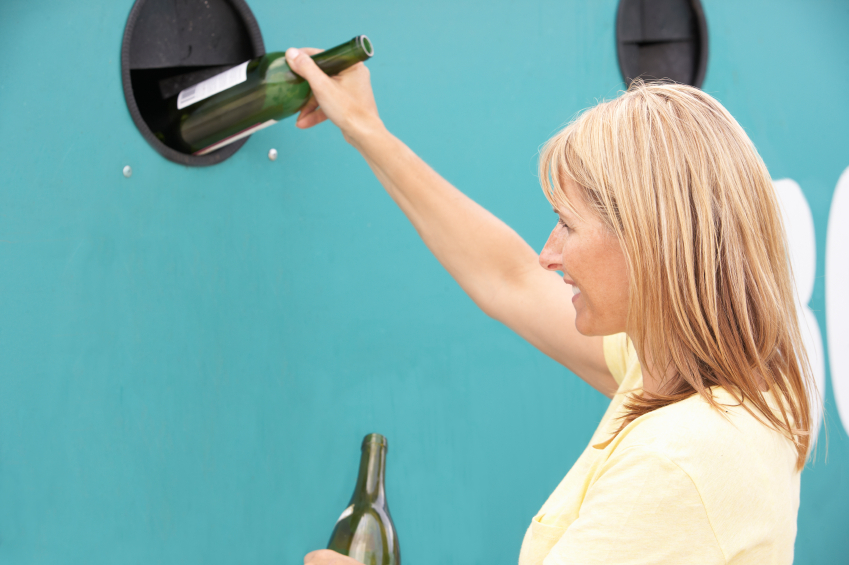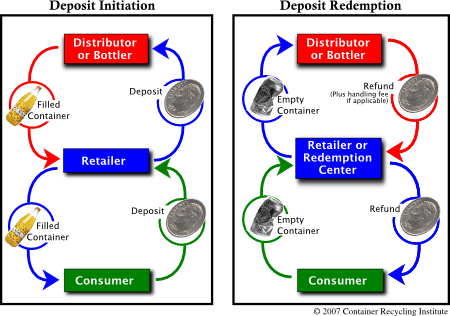
 When a retailer buys beverages from a distributor, a deposit is paid to the distributor. At the store, the consumer pays the deposit to the retailer when he or she buys the beverage. When the consumer returns the empty beverage container the deposit is refunded. The retailer recovers the deposit from the distributor, plus an additional handling fee in most U.S. states. The handling fee, which in Vermont is 4¢ for brand-sorted containers and 3.5¢ for commingled brands, helps to cover the cost of handling the containers.
There are currently two bills before the Vermont Legislature that supporters say will keep an estimated 100 million more bottles and cans out of Vermont’s landfills and off roadsides each year that opponents say pose a serious threat to the state’s beverage container recycling.
To read information from the supporter’s view of the new bills, visit vpirg.org/bottlebill/. To read the other side of the story, visit campaignforrecycling.org/states/vermont/vt_bottle_bill_law.
When a retailer buys beverages from a distributor, a deposit is paid to the distributor. At the store, the consumer pays the deposit to the retailer when he or she buys the beverage. When the consumer returns the empty beverage container the deposit is refunded. The retailer recovers the deposit from the distributor, plus an additional handling fee in most U.S. states. The handling fee, which in Vermont is 4¢ for brand-sorted containers and 3.5¢ for commingled brands, helps to cover the cost of handling the containers.
There are currently two bills before the Vermont Legislature that supporters say will keep an estimated 100 million more bottles and cans out of Vermont’s landfills and off roadsides each year that opponents say pose a serious threat to the state’s beverage container recycling.
To read information from the supporter’s view of the new bills, visit vpirg.org/bottlebill/. To read the other side of the story, visit campaignforrecycling.org/states/vermont/vt_bottle_bill_law.
“If the goal is to capture the maximum amount of materials possible, then curbside recycling, deposits, and drop-off centers should all be part of a well thought out pollution prevention and waste reduction.”— Lanier Hickman, former director, Solid Waste Management Association of North America